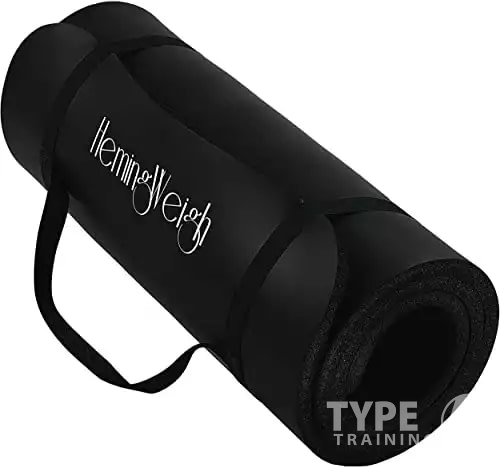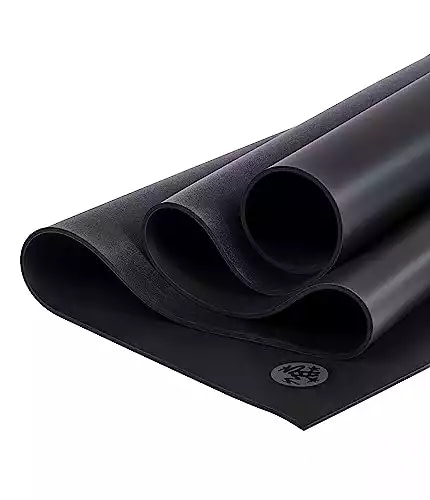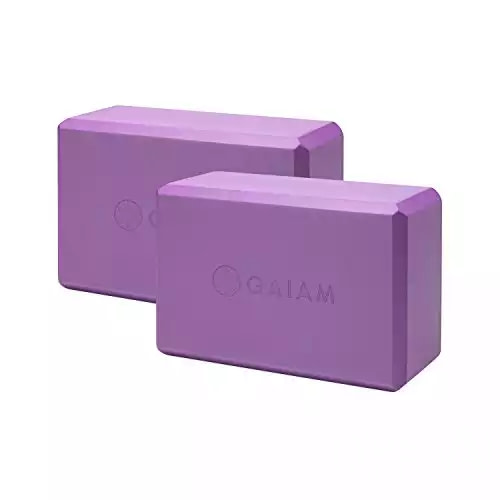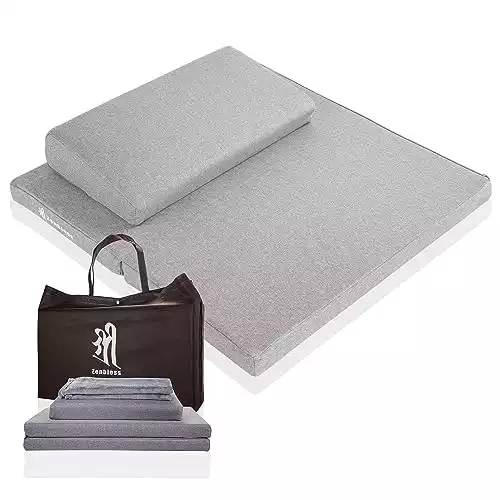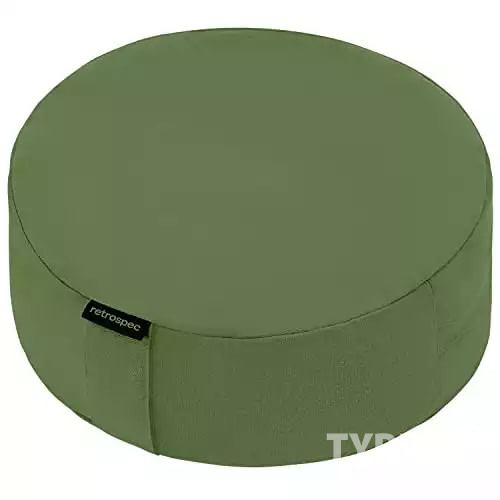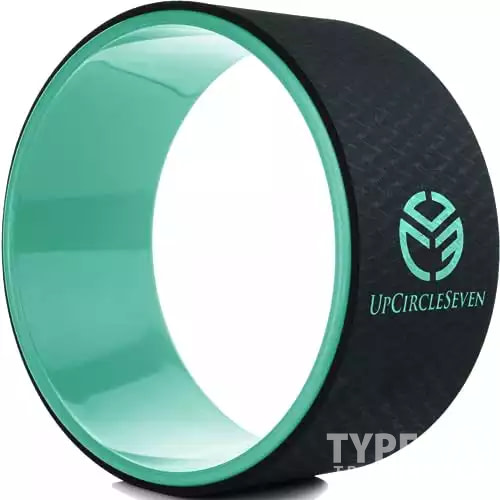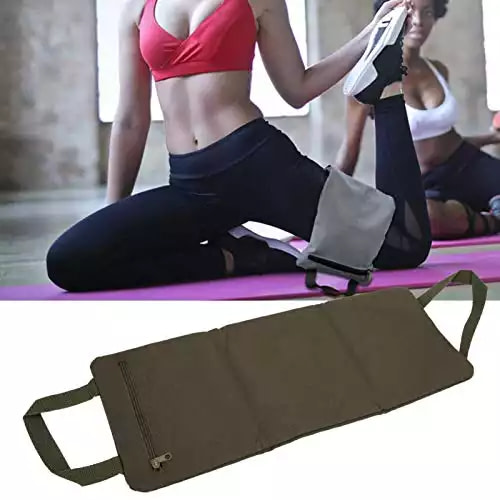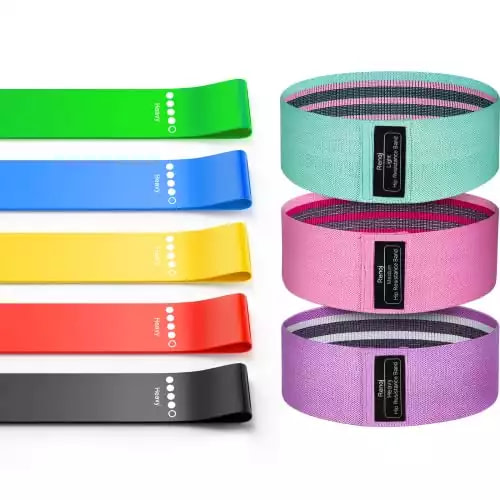Mats are essential for yoga practice, and we’ll discuss different types of mats. However, choosing the right yoga accessories can enhance your practice with benefits such as proper alignment, comfort, support, and variation. These accessories can reduce injury risk, enhance benefits, and allow exploration of new poses. We’ll explore the benefits of choosing the right yoga accessories and provide tips on selecting the best gear for your practice.
In addition to mats, there are several other types of yoga accessories that can enhance your practice, including blocks, straps, bolsters, blankets, and meditation cushions. Each serves a specific purpose and can help achieve proper alignment, deepen stretches, and provide comfort and support. We’ll discuss each accessory in detail and provide recommendations for choosing the right ones for your practice.
Reasons for choosing the correct Yoga accessories:
| Reason | Pros |
|---|---|
| Alignment | Reduces the risk of injury, enhances the benefits of your practice, and helps you achieve proper alignment in your poses. |
| Comfort | Increases comfort during practice by providing cushioning for joints and support for the body. |
| Support | Provides support for the body, allowing you to hold poses for longer periods and achieve deeper stretches. |
| Variation | Adds variety and challenge to your practice, allowing you to explore new poses and take your practice to the next level. |
Things to keep in mind:
Popular posts:
- Quality: Look for high-quality yoga accessories made of durable materials that can withstand regular use.
- Functionality: Choose accessories that serve a specific purpose in your practice and can help you achieve your goals.
- Compatibility: Make sure your accessories are compatible with your body type and level of experience.
- Price: Consider your budget when choosing accessories, as high-quality props can be more expensive but may be worth the investment in the long run.
Best Yoga Mats
When it comes to yoga, your mat is your foundation. It’s important to find the right one that suits your needs, whether you’re a beginner or an advanced yogi. Here are some of the best yoga mats on the market today.
|
Primary Rating:
3.5
|
Primary Rating:
3.5
|
Primary Rating:
3.5
|
|
$98.95
|
$154.95
|
$137.89
|
Best Yoga Mat Overall
The Manduka ProLite Yoga Mat is a top-rated mat that is perfect for all levels of yogis. It’s made from high-density cushioning that provides excellent support and grip, and it’s also eco-friendly. The mat comes in a variety of colors and has a lifetime guarantee.
Best Nonslip Yoga Mat
If you’re looking for a mat that won’t budge during your sweaty hot yoga practice, the Lululemon The Reversible Mat is a great choice. It has a polyurethane top layer that absorbs moisture and provides excellent grip, and a natural rubber bottom layer that keeps the mat in place.
|
Primary Rating:
3.5
|
Primary Rating:
3.5
|
Primary Rating:
3.5
|
|
$67.99
|
$39.99
|
$36.00
|
Best Thick Yoga Mat
For those who need extra cushioning for their joints, the Jade Harmony Professional Yoga Mat is a great option. It’s made from natural rubber and has a thickness of 5 millimeters, providing excellent support and comfort during your practice.
|
Primary Rating:
3.5
|
Primary Rating:
3.5
|
Primary Rating:
3.5
|
|
|
$59.79
|
|
Best Hot Yoga Mat
If you’re a fan of hot yoga, the Yoga Design Lab Combo Mat is perfect for you. It’s made from a microfiber top layer that absorbs moisture and provides excellent grip, and a natural rubber bottom layer that keeps the mat in place. Plus, it’s machine washable!
|
Primary Rating:
3.5
|
Primary Rating:
3.5
|
Primary Rating:
3.5
|
|
$154.95
|
$94.00
|
N/A
|
Best Yoga Mat for Beginners (Regular Old Mat)
If you’re just starting out with yoga and don’t want to spend a lot of money on a fancy mat, the Gaiam Yoga Mat is a great option. It’s affordable, lightweight, and comes in a variety of colors. Plus, it has a non-slip surface that provides excellent grip.
Things to Keep in Mind:
- Grip: Look for a mat with a non-slip surface to prevent slipping and sliding during your practice.
- Thickness: If you have joint issues or need extra cushioning, look for a mat with a thickness of at least 5 millimeters.
- Material: Consider the material of the mat and choose one that is eco-friendly and free from harmful chemicals.
- Size: Make sure to choose a mat that is the right size for your body to ensure a comfortable practice.
| Pros | Why You Should Get One |
|---|---|
| Manduka ProLite Yoga Mat | High-density cushioning, excellent support and grip, eco-friendly, lifetime guarantee |
| Lululemon The Reversible Mat | Polyurethane top layer for moisture absorption and grip, natural rubber bottom layer for stability |
| Jade Harmony Professional Yoga Mat | Natural rubber, thickness of 5 millimeters for extra cushioning |
| Yoga Design Lab Combo Mat | Microfiber top layer for moisture absorption and grip, natural rubber bottom layer for stability, machine washable |
| Gaiam Yoga Mat | Affordable, lightweight, non-slip surface |
|
Primary Rating:
3.5
|
Primary Rating:
3.5
|
Primary Rating:
3.5
|
|
$23.32
|
$21.98
|
$16.99
|
Why an Eco-Friendly, Non-Toxic Yoga Mat is Better for Your Health
Using an eco-friendly, non-toxic yoga mat can provide numerous health benefits for both the practitioner and the environment. These mats are made from sustainable materials that are free from harmful chemicals and toxins, making them a safer and healthier option for yoga practice. In this section, we’ll explore the health benefits of using eco-friendly, non-toxic yoga mats.
According to recently published studies, chronic exposure to phthalates, a group of chemicals commonly found in PVC materials, can have negative impacts on the endocrine system and the functioning of multiple organs. This can lead to long-term negative effects on pregnancy, child growth and development, and reproductive systems in both young children and adolescents. source: ncbi.nlm.nih.gov
While occasional use of a PVC yoga mat may not be harmful, it’s a good idea to choose a different material if possible. Natural rubber, jute, organic cotton, and cork are all eco-friendly and non-toxic options that can provide a safe and healthy surface for yoga practice.
Health Benefits Of Using Eco-friendly, Non-toxic Yoga Mats:
| Health Benefits | Description |
|---|---|
| Reduce Exposure to Harmful Chemicals | Eco-friendly, non-toxic yoga mats are made without harmful chemicals like PVC, phthalates, and heavy metals. This means you can practice yoga without worrying about inhaling or absorbing these toxins. |
| Better for the Environment | Eco-friendly yoga mats are made from sustainable materials that are biodegradable, recyclable, or made from recycled materials. This helps reduce the amount of waste that ends up in landfills and oceans. |
| Non-Slip Surface | Many eco-friendly yoga mats are designed with a non-slip surface that provides better grip and stability during yoga poses. This can help prevent injuries and improve your overall practice. |
| Durable and Long-Lasting | Eco-friendly yoga mats are often made from high-quality materials that are more durable and long-lasting than traditional yoga mats. This means you won’t have to replace your mat as often, saving you money and reducing waste. |
| Hypoallergenic | Some eco-friendly yoga mats are made from natural materials like rubber or cork, which are hypoallergenic and less likely to cause allergic reactions. This is especially important for people with sensitive skin or allergies. |
What is the Most Eco-Friendly Yoga Mat Material?
source: theurbivore.com
The ideal eco-friendly yoga mat material is one made from natural or recycled materials. However, your choice of material will depend on your personal preferences, the surface you’ll be practicing on (carpeted or outdoor), and the type of exercises you’ll be doing. Many brands offer yoga mats suitable for both indoor and outdoor practice.
If you prefer feeling the ground beneath you, a thinner mat would be ideal. But if you need extra support, a thicker mat would be best. Keep in mind that it’s all a matter of preference.
For hot yoga, cork is an excellent option as it has a breathable surface that is odor-free and naturally inhibits bacteria, mold, and fungal growth.
Some sustainable materials for yoga mats include jute, natural rubber, natural cork, organic or recycled cotton, and recycled plastic. Brands such as Scoria, Yoloha, and Urbivore use cork in their mats while Oko Living, Abhinehkrafts, and Brentwood Home use organic or recycled cotton. Sugamats makes yoga mats from recycled wetsuits, which reduces waste and carbon footprint.
Safe and sustainable materials for yoga mats:
Jute: extracted from the bark of the white jute plant, jute mats are typically good for hot yoga and are often blended with Polymer Environmental Resin (PER) for extra grip.
Natural rubber: harvested straight from rubber trees, natural rubber mats are 99% latex-free and non-Amazon harvested. Manduka’s eko line of yoga mats features natural rubber.
Natural cork: comes from cork oak forests where the tree is never cut down, and the bark grows back. Scoria, Yoloha, and Urbivore all use cork in their yoga mats.
Organic or recycled cotton: organic cotton doesn’t use pesticides or fertilizers that may pollute waterways and damage soil. Recycled cotton ensures the resource-intensive cotton crop doesn’t go to waste through reuse. Oko Living, Abhinehkrafts, and Brentwood Home use organic or recycled cotton in their mats.
Recycled plastic: has a smaller carbon footprint than virgin materials. Sugamats makes yoga mats from recycled wetsuits which would otherwise be landfilled.
| Product Image | Product Name / Primary Rating / Price | Primary Button |
|---|---|---|
|
||
|
||
|
||
|
||
|
||
|
Yoga Blocks
Yoga blocks are essential items for all yoga students. They come in different materials such as wood, cork, and foam. Yoga instructor and health-science journalist, Jake Panasevich, recommends wooden, cork, or firmer foam blocks because they are more stable. However, wooden and cork yoga blocks tend to be heavy, so if portability is important to you, go for a foam option.
There are also half-size blocks available for subtler modifications. Half wood blocks are great for placing under the pelvis during reclining hero’s pose, while Halfmoon’s Chip Foam blocks come with sturdy, washable covers and are recommended for hot yoga.
Here are three reasons why yoga blocks are important in your practice:
- They help deepen your stretches and improve alignment by providing support and stability.
- They allow you to modify poses to fit your level of flexibility and strength.
- They can be used as props for restorative yoga, meditation, and other exercises.
Consider the following things when choosing a yoga block:
| Pros |
|---|
| Provides support and stability for deeper stretches |
| Helps improve alignment |
| Allows for modifications to fit your level |
| Can be used for restorative yoga and meditation |
Things to keep in mind:
- Material: Choose a material that suits your needs and preferences.
- Size: Consider the size of the block and whether it fits your hands comfortably.
- Weight: If you plan on taking the block to class or traveling with it, consider a lighter option.
- Quantity: Depending on your practice, you may want to invest in more than one block.
In summary, yoga blocks are essential tools for all yoga students. They provide support and stability, allow for modifications, and can be used for restorative yoga and meditation. When choosing a block, consider the material, size, weight, and quantity that suits your needs and preferences.
|
Primary Rating:
3.5
|
Primary Rating:
3.5
|
Primary Rating:
3.5
|
|
$37.95
|
|
$16.98
|
Bolsters and Cushions
In yoga, bolsters and cushions are essential props that provide extra support, stability, and cushioning during a practice. They are particularly useful for restorative yoga practices where long holds in supported poses are common. Bolsters can make many poses more accessible and comfortable, such as lying on the backside of the body in savasana, corpse pose, where the use of a bolster underneath the knees can provide comfort and help students relax better into the resting phase of the practice.
When choosing a bolster, there are a few things to keep in mind. Firstly, it’s important to consider the quality and durability of the bolster. Heavier, sturdier bolsters will last longer and feel better during your practice, while lightweight or inflatable bolsters may be less expensive but won’t have the same stabilizing effects. Secondly, look for bolsters with removable and washable covers, which are easier to keep clean and hygienic.
Here are some popular bolsters that come highly recommended:
| Bolster | Features |
|---|---|
| Hugger Mugger Standard Bolster | Durable and supportive, rectangular shape, available in various colors |
| Halfmoon Essential Cotton Rectangular Bolster | Made from organic cotton, removable and washable cover, available in various colors |
| Gaiam Premium Round Bolster | Round shape, removable and washable cover, available in various colors |
| Minga Lily Organic Yoga Bolster | Made from organic cotton, removable and washable cover, available in various colors |
In summary, investing in a high-quality yoga bolster or cushion is a wise choice for anyone looking to deepen their practice. They provide crucial support and comfort during restorative yoga practices and can make many poses more accessible. When choosing a bolster, be sure to consider the quality, durability, and washability of the cover.
|
Primary Rating:
3.5
|
Primary Rating:
3.5
|
Primary Rating:
3.5
|
|
$45.62
|
$26.99
|
$43.97
|
Yoga Straps
Yoga straps are an essential tool for any yoga practitioner, providing length and space where it’s needed to help you achieve proper alignment and a deeper stretch. Here are three reasons why you should consider adding a yoga strap to your practice:
- Improve Flexibility: Yoga straps can help you achieve greater flexibility by allowing you to ease into poses that may be challenging due to tight muscles or limited mobility. By using a strap, you can gradually work towards deeper stretches without overexerting yourself.
- Proper Alignment: A yoga strap can help you achieve proper alignment in poses where your hands may not reach the floor or your feet. By using a strap to extend your reach, you can maintain proper alignment and avoid straining or injuring yourself.
- Deeper Stretch: Yoga straps with loops can help you achieve a deeper stretch by allowing you to hold poses for longer periods of time without fatiguing your muscles.
If you’re considering purchasing a yoga strap, here are some pros to keep in mind:
| Pros |
|---|
| Helps improve flexibility |
| Promotes proper alignment |
| Allows for deeper stretches |
| Can be used in a variety of poses |
When selecting a yoga strap, keep these things in mind:
- Material: Look for a strap made of a durable material like cotton to ensure it can withstand regular use.
- Length: Consider the length of the strap and choose one that will allow you to comfortably hold it without straining.
- Fastener: There are different types of fasteners available, including D-ring and buckle options. Choose one that is easy to adjust and secure.
- Brand: Some popular brands include Gaiam, B Yoga, and Halfmoon. Do your research and read reviews to find the best option for your needs.
By incorporating a yoga strap into your practice, you can improve your flexibility, achieve proper alignment, and deepen your stretches. Keep these tips in mind when selecting a strap to ensure you get the most out of your practice.
|
Primary Rating:
3.5
|
Primary Rating:
3.5
|
Primary Rating:
3.5
|
|
|
$28.00
|
$9.99
|
Yoga Blankets
Yoga blankets are an essential prop for a rewarding cooldown after a yoga practice. They can also reduce pressure on your points of contact with the mat, such as under your knees during cat-cow pose. Here are three reasons why you should consider getting a yoga blanket:
- Comfort: Yoga blankets provide a comfortable and cozy layer for your body during relaxation poses such as savasana.
- Support: They can provide extra support for your body during certain poses, such as shoulder stand.
- Warmth: They can keep you warm during a restorative yoga practice or in a cold studio.
Here are some pros to consider when deciding whether to get a yoga blanket:
| Pros |
|---|
| Provides warmth and comfort |
| Offers support during poses |
| Can reduce pressure on points of contact |
| Can be used as a meditation cushion |
| Can be used as a prop for seated poses |
When selecting a yoga blanket, keep in mind:
- Material: Choose a blanket made from soft and breathable material, such as cotton or wool.
- Size: Make sure to choose a blanket that is large enough to cover your body comfortably.
- Thickness: Consider the thickness of the blanket to ensure it provides enough support for your needs.
- Style: Choose a style that matches your personal preference and yoga practice.
In summary, yoga blankets are a versatile prop that can provide comfort, support, and warmth during your yoga practice. When selecting a blanket, keep in mind the material, size, thickness, and style that best suits your needs and personal preferences.
|
Primary Rating:
3.5
|
Primary Rating:
3.5
|
Primary Rating:
3.5
|
|
$16.99
|
N/A
|
$25.39
|
Yoga Towels
Yoga towels are an essential accessory for any yogi. They provide a non-slip surface and absorb sweat during practice. Here are three reasons why you should consider getting one:
- Hygiene: Yoga mats can harbor bacteria and sweat, making them unsanitary. A yoga towel provides a barrier between you and the mat, keeping you clean and healthy.
- Improved Grip: Sweat can make your hands and feet slip on the mat, making it difficult to hold poses. A yoga towel provides a non-slip surface, improving your grip and allowing you to hold poses longer.
- Versatility: Yoga towels can be used for more than just yoga. They can be used for hot yoga, Pilates, and other exercises where sweat is a concern.
| Pros |
|---|
| Provides a non-slip surface |
| Absorbs sweat during practice |
| Improves grip |
| Versatile for different types of exercise |
| Hygienic barrier between you and the mat |
When choosing a yoga towel, keep these things in mind:
- Material: Look for towels made of non-slip and absorbent materials like microfiber or cotton.
- Size: Make sure the towel fits your yoga mat properly.
- Maintenance: Check the care instructions to ensure the towel is easy to clean and maintain.
- Durability: Choose a towel that is durable and will withstand multiple washes and uses.
|
Primary Rating:
3.5
|
Primary Rating:
3.5
|
Primary Rating:
3.5
|
|
N/A
|
|
|
Yoga Meditation Cushions
Yoga meditation cushions are an essential accessory for any yogi who wants to take their practice to the next level. Here are three reasons why you should consider getting one:
- Comfort: Meditation cushions provide a comfortable and supportive surface for you to sit on during meditation. This can help reduce discomfort in your back, hips, and legs, allowing you to meditate for longer periods of time.
- Posture: A good meditation cushion can help you maintain proper posture during your meditation practice. This can help prevent strain on your neck, shoulders, and back, and allow you to breathe more easily.
- Focus: By providing a comfortable and supportive surface, a meditation cushion can help you stay focused during your meditation practice. This can help you achieve a deeper state of relaxation and mindfulness.
If you’re considering getting a yoga meditation cushion, here are some pros to keep in mind:
| Pros |
|---|
| Provides comfort and support during meditation |
| Helps maintain proper posture |
| Can help you stay focused during your practice |
| Comes in a variety of shapes, sizes, and materials |
| Can be used for other yoga poses as well |
Here are some things to keep in mind when choosing a yoga meditation cushion:
- Size: Make sure to choose a cushion that is the right size for your body. A cushion that is too small or too large can be uncomfortable and may not provide the support you need.
- Material: Meditation cushions come in a variety of materials, including cotton, silk, and buckwheat hulls. Consider which material will be most comfortable and supportive for your body.
- Shape: Meditation cushions come in a variety of shapes, including round, rectangular, and crescent-shaped. Consider which shape will be most comfortable and supportive for your body.
- Price: Meditation cushions can range in price from around $20 to over $100. Consider your budget and choose a cushion that fits within your price range.
In conclusion, a yoga meditation cushion can be a valuable addition to your yoga practice, providing comfort, support, and focus during your meditation practice. Keep these things in mind when choosing a cushion, and you’re sure to find one that meets your needs and fits your budget.
| Product Image | Product Name / Primary Rating / Price | Primary Button |
|---|---|---|
|
||
|
||
|
||
|
Yoga Wheels
Yoga wheels are an important tool to add to your yoga practice to help you achieve deeper stretches and poses. They provide gentle support and traction to help alleviate muscle tension, improve flexibility, and promote blood circulation.
Introduction
If you’re looking to take your yoga practice to the next level, a yoga wheel is a great investment. Here are three reasons why:
- Deepen your stretches: Yoga wheels can help you get deeper into your stretches, allowing you to open up your chest, shoulders, and hips.
- Improve balance: By using a yoga wheel, you can improve your balance and stability, helping you to hold poses for longer periods of time.
- Increase flexibility: Yoga wheels can help you improve your flexibility by allowing you to stretch further than you might be able to on your own.
Pros of Using a Yoga Wheel
Here are some pros to consider when deciding whether to get a yoga wheel:
| Pros |
|---|
| Helps you achieve deeper stretches |
| Can improve balance and stability |
| Can increase flexibility |
| Provides gentle support and traction |
| Can alleviate muscle tension |
| Promotes blood circulation |
Things to Keep in Mind
Here are a few things to keep in mind when using a yoga wheel:
- Start slowly: If you’re new to using a yoga wheel, start with basic poses and work your way up to more advanced poses.
- Use proper form: Make sure to use proper form when using a yoga wheel to avoid injury.
- Choose the right size: Yoga wheels come in different sizes, so make sure to choose one that is appropriate for your body size and yoga practice.
- Don’t overdo it: While yoga wheels can be beneficial, it’s important not to overdo it. Listen to your body and don’t push yourself too hard.
By incorporating a yoga wheel into your practice, you can deepen your stretches, improve your balance and stability, and increase your flexibility. Just remember to start slowly, use proper form, choose the right size, and don’t overdo it.
|
Primary Rating:
3.5
|
Primary Rating:
3.5
|
Primary Rating:
3.5
|
Primary Rating:
3.5
|
|
$99.97
|
$84.99
|
$52.97
|
$32.00
|
Yoga Balance Balls
Using a yoga balance ball during your exercise routine can help improve your balance, expand your range of motion, and strengthen your core.
| Pros |
|---|
| Improves balance |
| Expands range of motion |
| Strengthens core |
Keep in mind:
- Choose the right size ball for your height and weight.
- Inflate the ball properly to avoid injury.
- Use on a non-slip surface to prevent accidents.
- Consult a doctor before use if you have any medical conditions.
|
Primary Rating:
3.5
|
Primary Rating:
3.5
|
Primary Rating:
3.5
|
|
$28.95
|
$24.99
|
$25.99
|
Yoga Sandbags
Yoga sandbags are a popular prop used in yoga practice to provide additional weight and pressure to help deepen your stretches and poses. They can be used to activate the relaxation response, allowing you to sink deeper into a pose. The additional pressure may also help diffuse feelings of anxiety and sensory overload. Sandbags also stabilize hypermobile joints and provide a soothing “hug” to your overworked body and mind.
If you’re looking for a yoga sandbag, consider Halfmoon’s sandbags for their easy-to-use zippered closures or Tools for Yoga’s sandbags for their sturdiness and softness. These sandbags are designed to help you get the most out of your yoga practice.
Here are some reasons why you might want to consider incorporating a yoga sandbag into your practice:
| Pros |
|---|
| Provides additional weight and pressure to help deepen stretches and poses |
| Activates the relaxation response, allowing you to sink deeper into a pose |
| Helps diffuse feelings of anxiety and sensory overload |
| Stabilizes hypermobile joints and provides a soothing “hug” to your overworked body and mind |
When looking for a yoga sandbag, keep in mind the following:
- Consider the weight of the sandbag and whether it’s appropriate for your practice.
- Look for a sandbag with a zippered closure for easy filling and emptying.
- Choose a sandbag made from durable materials that can withstand frequent use.
- Consider the size of the sandbag and whether it’s appropriate for the poses you’ll be practicing.
Adding a yoga sandbag to your practice can help you deepen your stretches and poses, activate the relaxation response, and provide additional stability and support.
|
Primary Rating:
3.5
|
Primary Rating:
3.5
|
Primary Rating:
3.5
|
Primary Rating:
3.5
|
|
$34.95
|
$59.95
|
$16.64
|
$59.95
|
Yoga Resistance Bands
If you’re considering purchasing a yoga strap, it’s important to know that it can be a versatile and useful tool in your practice. Yoga straps can be used in a variety of poses to deepen stretches, improve flexibility, and enhance alignment. They can also be helpful for beginners who may not have the flexibility or strength to perform certain poses without assistance. When choosing a yoga strap, consider the length, material, and buckle type to ensure it meets your needs. With the right strap, you can take your practice to the next level and achieve deeper stretches and greater flexibility.
Here are five reasons why you should consider using resistance bands in your yoga practice:
- Connect Yoga Cues to the Body: Resistance bands can help clarify specific cues so that you can more readily feel what is happening in your body. They can facilitate the experience of interconnection in the body and help you manipulate your body to create all sorts of sensory experiences. For example, if you loop a band around your entire body (under your heels and over your head) and press your feet down to lift your spine in mountain pose, you will undoubtedly feel how the band creates a container into which the body can push.
- Provide Proprioceptive Feedback: The bands provide feedback to the brain and strengthen the mind-body connection. This increases our proprioception, which is our ability to perceive where our body is in space. Using bands can reroute misperceptions and strengthen accurate proprioception, allowing you to move the body more efficiently. For example, if you stretch a band between your hands with your arms at shoulder height in mountain pose and then reach your arms overhead from there, it will be harder to bend your elbows.
- Help Stabilize Joint Activity Through Isometrics: Resistance bands can help you work with stabilizing the joints by engaging all the musculature around the joint and practicing isometric work. Isometric contractions bring an entirely new dynamic to the joint while physically supporting it. For example, to create muscular engagement around the entire elbow joint in tabletop, place a resistance band around your upper arms and push your upper arms out into it.
- Help Control Movements by Moving Against an External Force: Resistance bands can help you build strength to control your body as it moves against an external force. This facilitates ease and support in both your yoga practice and in your everyday movements. Working with resistance bands is also a great way to sneak an extra element of strength training into your asana practice. As bands come in all degrees of resistance, you can increase the resistance as you build strength.
- Invite Curiosity, Play, and Experimentation Into Your Practice: Resistance bands keep you super aware and help you to focus. They can help you reinvent or reinvigorate ordinary poses and fully explore this inner adventure. Resistance bands may seem like “gym props” to some people, but they can inspire you and change the way you experience movement in your body.
Pros of Using Yoga Resistance Bands
Here are some pros of using yoga resistance bands:
| Pros |
|---|
| Facilitate the mind-body connection |
| Provide proprioceptive feedback |
| Strengthen accurate proprioception |
| Help stabilize joint activity through isometrics |
| Build strength to control your body as it moves against an external force |
| Sneak an extra element of strength training into your asana practice |
| Reinvent or reinvigorate ordinary poses |
| Fully explore your inner adventure |
Things to Keep in Mind
Here are some things to keep in mind when using yoga resistance bands:
- Always warm up before using resistance bands in your practice.
- Use the appropriate resistance band for your level of strength and experience.
- Do not overstretch the band as it may snap and cause injury.
- When using resistance bands, be mindful of your alignment and posture to avoid straining your joints.
Incorporating resistance bands into your yoga practice can enhance your experience and deepen your mind-body connection. They can help you feel a clear reaction in different areas of your body, provide proprioceptive feedback, and strengthen accurate proprioception. Resistance bands can also help you build strength, stabilize joint activity, and invite curiosity, play, and experimentation into your practice. Keep these things in mind when using resistance bands to avoid injury and get the most out of your practice.
|
Primary Rating:
3.5
|
Primary Rating:
3.5
|
Primary Rating:
3.5
|
|
$20.98
|
|
|
Yoga Socks
Yoga socks are non-slip socks designed to provide traction and grip during yoga practice. They are an essential piece of equipment for anyone who practices yoga, especially if you practice on a slippery surface or in a cold room. Here are three reasons why yoga socks are important in your practice:
- Improved stability: Yoga socks provide a better grip on the mat, which helps to improve your stability during yoga poses.
- Hygiene: Yoga socks help to keep your feet clean and dry during yoga practice, especially if you practice in a public studio or gym.
- Comfort: Yoga socks are made from soft, breathable materials that help to keep your feet comfortable and warm during yoga practice.
Here are some pros to consider when deciding whether to get yoga socks:
| Pros |
|---|
| Provides better grip on the mat |
| Helps to keep feet clean and dry |
| Made from soft, breathable materials |
| Can be used in place of yoga |
When shopping for yoga socks, keep the following things in mind:
- Sizing: Make sure to choose the right size for your feet to ensure a comfortable fit.
- Material: Look for socks made from breathable materials that will keep your feet dry and comfortable.
- Grip: Check that the socks have a good grip on the bottom to prevent slipping.
- Style: There are many different styles of yoga socks available, so choose one that suits your personal style and preferences.
Overall, yoga socks are a great investment for anyone who practices yoga. They provide improved stability, hygiene, and comfort during your practice.
|
Primary Rating:
3.5
|
Primary Rating:
3.5
|
Primary Rating:
3.5
|
Primary Rating:
3.5
|
|
N/A
|
$18.99
|
$14.99
|
|
Yoga Eye pillows
Yoga eye pillows are a popular yoga accessory that can help enhance your practice. They are designed to be placed over your eyes during savasana or meditation to provide a soothing and calming effect. Here are three reasons why you should consider adding a yoga eye pillow to your practice:
- Promotes relaxation: The gentle pressure of the eye pillow on your eyes and forehead can help calm your nervous system, reduce stress, and promote relaxation.
- Blocks out light: The eye pillow can block out any unwanted light, helping you to fully immerse yourself in your practice and deepen your meditation.
- Aromatherapy benefits: Many yoga eye pillows are infused with essential oils, such as lavender or chamomile, which can provide additional relaxation and aromatherapy benefits.
Here are some pros to consider when deciding whether to get a yoga eye pillow:
| Pros |
|---|
| Provides relaxation and stress relief |
| Blocks out light for a deeper meditation |
| Infused with aromatherapy benefits |
When choosing a yoga eye pillow, keep in mind:
- Material: Choose a material that is comfortable and soft against your skin, such as silk or organic cotton.
- Filling: Look for an eye pillow that is filled with natural materials such as flaxseed or lavender.
- Scent: Consider the scent of the eye pillow and choose one that is appealing to you.
- Weight: The weight of the eye pillow should be comfortable and not too heavy.
Overall, a yoga eye pillow can be a valuable addition to your yoga practice, providing relaxation, stress relief, and aromatherapy benefits.
|
Primary Rating:
3.5
|
Primary Rating:
3.5
|
Primary Rating:
3.5
|
|
$24.50
|
$21.95
|
|
Related Post
Frequently Asked Questions
What are the essential yoga props for a yoga practice?
There are several essential yoga props that can help enhance your yoga practice. The most important prop is the yoga mat, which provides a grippy surface to prevent slippage during poses and adds cushioning for body parts that contact the floor. Other essential yoga props include yoga blocks, straps, blankets, and bolsters.
Where can I find wholesale yoga props?
If you’re looking for wholesale yoga props, you can find them online or at your local yoga studio. Some popular online retailers that offer wholesale yoga props include Amazon, Yoga Direct, and Manduka. You can also check with your local yoga studio to see if they offer wholesale pricing on yoga props.
What are some of the best yoga props and accessories for beginners?
For beginners, some of the best yoga props and accessories include yoga blocks, straps, and blankets. Yoga blocks can help provide support and stability in standing and balancing poses, while straps can help deepen stretches and improve flexibility. Blankets can be used for added cushioning and support during seated and reclining poses.
What are the different types of yoga props and their uses?
There are several different types of yoga props, each with their own unique uses. Yoga blocks can be used for support and stability in standing and balancing poses, while straps can help deepen stretches and improve flexibility. Blankets can be used for added cushioning and support during seated and reclining poses. Bolsters can be used for support during restorative and yin yoga poses, while yoga wheels can help improve flexibility and core strength.
Are there any props that can help with injuries or limitations in a yoga practice?
Yes, there are several props that can help with injuries or limitations in a yoga practice. For example, if you have tight hips or lower back pain, a bolster or blanket can be used to provide support during seated poses. If you have limited mobility in your shoulders, a strap can be used to help you reach your arms behind your back in certain poses. Additionally, blocks can be used to modify poses and make them more accessible.
What are some affordable options for purchasing yoga props online?
Some affordable options for purchasing yoga props online include Amazon, Yoga Direct, and Gaiam. You can also check with your local yoga studio to see if they offer any discounts or promotions on yoga props. Additionally, many retailers offer sales and discounts throughout the year, so be sure to keep an eye out for deals.







